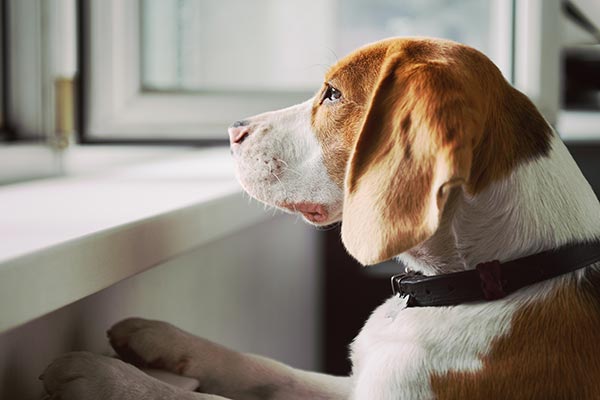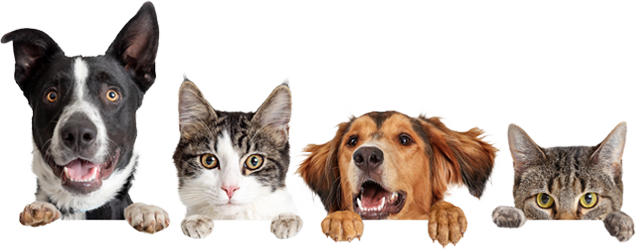Post-Quarantine Separation Anxiety in Pets

The COVID-19 pandemic has been hard on all of us and now that people are heading back out into the world it is taking its toll on another group, our pets. As far as our dogs and cats know we have been staying home this year to make them the center of our universe. For most pets, these past months full of cuddles and playtime have been everything they could ever want.
As we head back to work and break this routine many pets will show signs of separation anxiety and that can translate into anxiety for owners too. Let’s discuss separation anxiety as well as how you and your furry best friend can learn to cope with it as you acclimate back to normal life.
Separation What Now?
Chances are you have heard the word separation anxiety used somewhere before, but what does it mean? Separation anxiety is defined as a sense of anxiety provoked by the worry or actually of being separated from one’s mother/preferred companion. The term mother is used since separation anxiety is most researched in young children, but with our pets being our fur babies this definition holds true.
Our pets look to us for affection, fun, food and so much more. You are their world, so when you go from being right by their side for months to being away for part of the day their world suddenly seems to be falling apart. Separation anxiety may new to some pets and recurring for others, regardless owners need to know the signs.
How Do You Know if Your Pet Has Separation Anxiety?
Our pets are often smarter than we think, so signs of separation anxiety often show themselves before you have even left your pet. They may recognize the sound of your keys or the shoes you only wear when you are headed out. Most signs are behavioral and they vary greatly depending on the animal.
Symptoms of Separation Anxiety Include:
- Restlessness
- Pacing
- Jumping
- Vomiting
- Excessive drooling
- Trembling
- Hyperventilation
- Loss of appetite
- Accidents in the house
- Excessive vocalization
- Attempting to escape
- Excessive grooming
- Self-directed aggression
- Lethargy or withdrawal
- Mild aggression towards the owner during departure
These behaviors are considered to be the most intense within 15 minutes of the owner’s departure, however, they can last much longer for some dogs. All of these signs can range from mild to extreme and many of these can be signs of other problems as well. For this reason, it can be very helpful to set up a consultation with your veterinarian to assure that there are no underlying problems at the source of these behaviors.
The Best Treatment is Always Prevention
Preventative medicine has a huge impact on veterinary medicine because never having a problem is better than undoing the damage from a problem you already have. It may sound odd but there are recommended preventative measures for separation anxiety.
The American Veterinary Medical Association (AVMA) has found that dogs who have all of their requirements for well being met are less likely to develop separation anxiety. The major needs that they point to are social interaction, intellectual stimulation, and exercise. Grooming, cuddling, problem-solving toys, training, walks, and fetch are great ways to meet these needs. You know your pet best so customizing a routine of their favorite ways to bond, think, and play is a great way to reduce or prevent separation anxiety.
Do Not Amplify Their Anxiety
Getting excited to see your pet when you get home can be the highlight of your day and theirs, but it is important to not overdo it. The AVMA has also reported that dramatic good bye’s and hello’s that are prompted by the owner amplify the pet’s anxiety. Our pets understand us very well and these actions show them that your departure is upsetting and your return is miraculous which intensifies your pet’s anxiety around these events.
The best thing you can do is calmly and lovingly greet them. Don’t worry, they will know how much you love seeing them every day even if replace ecstatic meetings with calm petting and forehead kisses.
Slow And Steady Change
Just as children learn to explore the world away from their mother your pet can relearn how to live without constantly being by your side. If you have the ability to do so it can be greatly beneficial to slowly acclimate your pet to your absence as you prepare to resume a normal life.
You can start with short distances and short periods. At first, it may be staying a distance away but within sight. Then you can move to another place in your home where you are out of sight and slowly increase the time you are separated. Eventually short and gradually lengthening trips away from the house will aid in working your pet back up to you leaving quarantine.
All the while it is important to greet your pet calmly when you rejoin them and to assure that their requirements for well being are fully met.
You Are Not Alone
Hearing or seeing your furry best friend in distress after your departure can be heartbreaking, but you are not alone. Separation anxiety in pets is something that has been going on for hundreds of years and as we recover from the aftermath of COVID-19 thousands of other pet owners will face the difficulty of separation anxiety as well.
The highlight of this is that many products and forms of treatment exist to treat separation anxiety. There are pheromone dispensers that help pets relax by releasing a scent that would normally tell them everything is ok. There are treat puzzles and endless toys that keep pets focused on something other than your absence. There are even fitted jackets that mimic the comforting pressure that would be experienced if your pet were cuddling with you.
Your veterinarian is also an amazing resource. Veterinarians are wells of knowledge about pets and through countless experiences with separation anxiety, they can help formulate a plan to help your pet stay calm and happy while you are away. In some cases, drugs are even prescribed to aid in reducing separation anxiety quickly. This is especially critical for destructive, aggressive, or self-harming animals.
Separation anxiety does not have to be a daily struggle for you and your pet, so keep these tips in mind as you return to daily life and long hours of work in the office without your furry companion.
Citations:
Robinson, L. (n.d.). Separation Anxiety and Separation Anxiety Disorder. Retrieved September 13, 2020, from https://www.helpguide.org/articles/anxiety/separation-anxiety-and-separation-anxiety-disorder.htm
Schwartz, S. (2003). Separation anxiety syndrome in dogs and cats. Journal of the American Veterinary Medical Association, 222(11), 1526-1532. doi:10.2460/javma.2003.222.1526
Flannigan, G., & Dodman, N. H. (2001). Risk factors and behaviors associated with separation anxiety in dogs. Journal of the American Veterinary Medical Association, 219(4), 460-466. doi:10.2460/javma.2001.219.460

